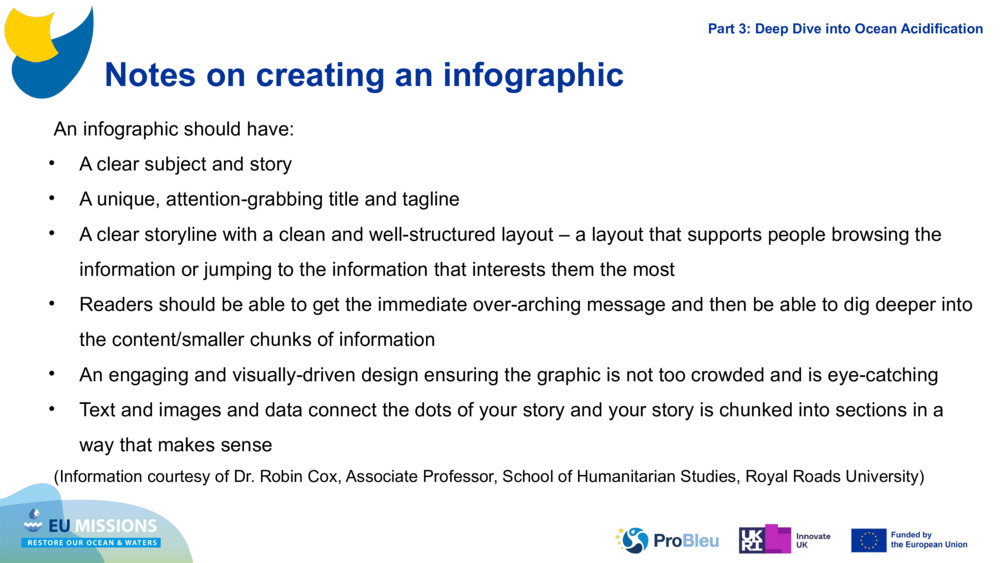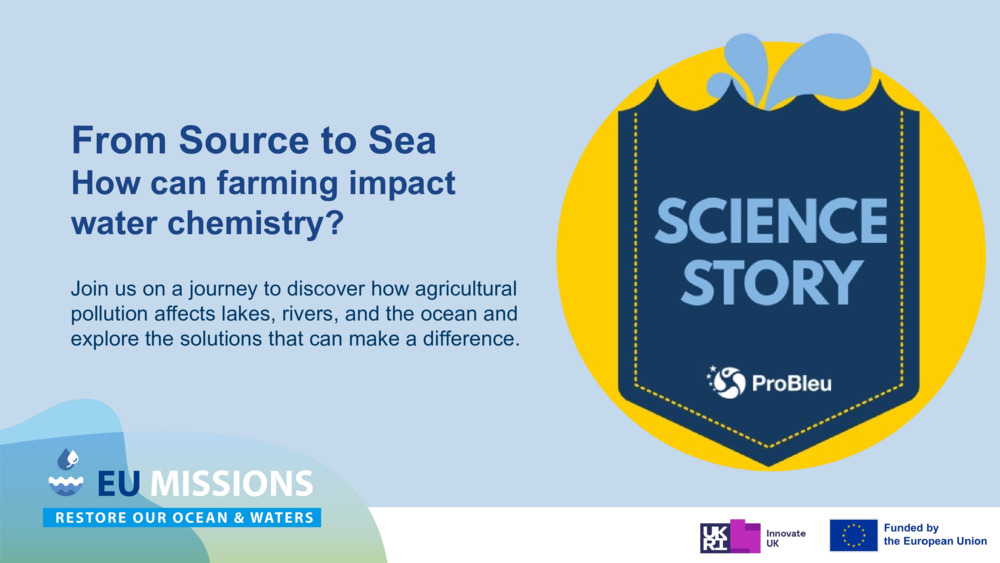Notes on creating an infographic
Notes on creating an infographic
Notes on creating an infographic An infographic should have: A clear subject and story A unique, attention-grabbing title and tagline A clear storyline with a clean and well-structured layout – a layout that supports people browsing the information or jumping to the information that interests them the most Readers should be able to get the immediate over-arching message and then be able to dig deeper into the content/smaller chunks of information An engaging and visually-driven design ensuring the graphic is not too crowded and is eye-catching Text and images and data connect the dots of your story and your story is chunked into sections in a way that makes sense (Information courtesy of Dr. Robin Cox, Associate Professor, School of Humanitarian Studies, Royal Roads University) Part 3: Deep Dive into Ocean Acidification

Alkuperäinen diaesitys: Water Chemistry with Plymouth Marine Laboratory
Aiheet: Kestävät luonnonvarat. Hapenpoisto. Valtameri. Makea vesi. Meren kemia. Ravinteiden saastuminen.
Sopivat iät: 12. 13. 14. 15. 16. 17. 18.
Avainsanat: Biologia. Emäksisyys. Happamuus. Hiili. Hiilidioksidi. Hypoksia. Indikaattorit. Kemia. Kemialliset reaktiot. Maatalous. Molekyylejä. PH. Ravinteita. Rehevöityminen. Valtamerten happamoituminen.
Lähettäjä: pml-admin
Tätä sisältöä käyttävien pakettien määrä: 1
Licensed under CC BY 4.0
Tätä sisältöä on käytetty seuraavissa resurssipaketeissa:
Vesikemia Plymouth Marine Laboratoryn kanssa
Vesikemian opetus on tärkeää, koska se yhdistää keskeisiä tieteellisiä...
Katso tiedetarina